
As many as 110 people were killed in Iraq yesterday and over 200 wounded in one of the bloodiest days of the occupation in months. We go to Baghdad, the scene of some of the weekend’s worst casualties, to speak with journalist Patrick Cockburn of the London Independent. [includes rush transcript]
As many as 110 people were killed in Iraq yesterday and over 200 wounded in one of the bloodiest days of the occupation in months. The Iraqi Health Ministry told Reuters the worst casualties were in Baghdad, where 37 were killed, and in Tal Afar near the Syrian border where 51 people died.
About a dozen people were killed–including a young girl and a Palestinian reporter for al-Arabiya–when a US helicopter fired into a crowd of civilians in Baghdad who had surrounded a burning Bradley fighting vehicle.
Speaking on NBC, Secretary of State Colin Powell said, “This is not the time to get weak in the knees or faint about it, but to drive on and finish the work that we started.”
Meanwhile, in an interview with British newspapers, Iraq’s interim Prime Minister, Iyad Allawi, has said elections must go ahead as planned in January even if violence stops some Iraqis from voting.
In the latest fighting, at least 15 people were killed in a joint US-Iraqi attack on targets in Falluja, this according to the BBC.
Witnesses said US artillery bombarded several districts, before circling warplanes opened fire.
- Patrick Cockburn, journalist with the London Independent.
Transcript
AMY GOODMAN: We turn now to Patrick Cockburn of The Independent newspaper. He’s in Baghdad. Welcome to Democracy Now!, Patrick. Patrick, welcome to Democracy Now!.
PATRICK COCKBURN: Hello, can you hear me?
AMY GOODMAN: We can — we can hear you a bit. If could you speak right into the phone. Can you tell us what has happened this weekend.
PATRICK COCKBURN: Well, as you said, this has been a very bloody weekend, and it’s with people being killed all over Iraq, and right in the center of Baghdad. Yesterday in the Haifa Street, which is only a few hundred yards from the so-called Green Zone, which is the headquarters of the American interim Iraqi government headquarters, 13 people were killed, including a television — Arab television correspondent was actually killed on-air when a U.S. — two us helicopters fired rockets into a crowd. There is an air of violence throughout the whole city and indeed throughout the whole country.
AMY GOODMAN: Patrick, can you describe in more detail what happened with the crowd that was gathered around the Bradley vehicle, the U.S. soldiers already evacuated from it. Why did the U.S. attack by helicopter, and what exactly happened with the people, including the al-Arabiya journalist?
PATRICK COCKBURN: I think this has been misreported somewhat, going by people I have talked to who were wounded in the attack and have come from the area. What seems to have happened was this. This is a he very tough area, Sunni-Moslem, very much against the occupation, around 8 in the morning, a U.S. Bradley fighting vehicle was hit by a bomb and six U.S. Soldiers were wounded, not very badly —
AMY GOODMAN: Patrick, are you there? Patrick?
PATRICK COCKBURN: Can you hear?
AMY GOODMAN: Yes, I can now hear you. If you’re moving, don’t move around. It’s great. We were able to get you, but we have a very bad connection here. Go ahead.
PATRICK COCKBURN: Okay. I’m sorry. It was hit, the Bradley was hit and then about an hour later people came out. There were children climbing on the Bradley waving flags. Then the — it was somewhat after, quite a lock time after the Bradley had been hit by the bomb that the helicopters attacked, and really it was pretty quiet at the time. You could see that from the video of the television correspondent who was killed that nothing much was happening, and then suddenly out of the blue rockets started raining down. Hello?
AMY GOODMAN: Yes. And the al Arabiya journalist, actually being filmed with his report by the Reuters cameraman?
PATRICK COCKBURN: Yes. He had been going to work, the Arabiya correspondent, and saw that there was some turmoil and got out of his car. Obviously, he was not wearing a flak jacket and he was just about to beginning his report when the rocket landed and struck him in the back and killed him pretty well instantly. But I have talked to many of the other people in the hospital, who were just people going to work. People who don’t even necessarily come from that area, but use that — walk down that street in the center of Baghdad to get to their work.
AMY GOODMAN: Patrick Cockburn the Pentagon in defense of what it had done, a military spokesperson said, U.S. troops fired on the Bradley, “for the safety of the people around it.”
PATRICK COCKBURN: Well, I mean, that’s pretty — an amazing thing to say, because what we have is not contested by anybody that 13 people are dead and 41 are wounded, most of them in this attack. It’s difficult to see, also, why firing at the Bradley would make it safe for these people. But in any case, if you look at the video of the al Arabiya correspondent who was killed, you can see that he’s standing about 150 yards from the Bradley and it was here that the rockets landed. It wasn’t actually close. They were aiming for the Bradley and they certainly missed it and fired straight into the crowd. There shouldn’t be any doubt about this, because sadly, we have film of the moment that the rockets landed killing all these people.
AMY GOODMAN: We’re talking to Patrick Cockburn, he writes for The Independent newspaper of Britain. Why does the U.S. try to destroy its own vehicles once they have been hit? Even if — I mean, there’s no people in them?
PATRICK COCKBURN: I mean, the reason they put forward is that they wanted to destroy the arms and ammunition on board of the vehicle, which had been abandoned in the middle of Haifa Street, but again, this is peculiar to do this from the air because when this vehicle was hit by a bomb, they removed the wounded, and it would have been quite easy to, you know, — if you wanted to destroy the vehicle at that stage safely to simply put an explosive charge or grenade inside, which I have seen done in Baghdad before, but it’s pretty amazing to wait and then attack your own vehicle from the air when there are crowds around it. And in this case, you don’t even hit the vehicle. You fire your rockets 150 yards away.
AMY GOODMAN: Patrick Cockburn, what about Tal Afar near the Syrian border?
PATRICK COCKBURN: This is a very strange and mysterious episode, because you have to realize that Tal Afar is a peculiar place. It is not inhabited by Arabs, it’s not inhabited by Kurds. It is inhabited by the Turkmen minority, and it’s not a place that you would expect to be a base for resistance against the U.S. or the Iraqi government. I do know that the government of Turkey, which has protective role over the Turkmens — the Turkmens here — believe that there’s really an ethnic war going on there between the Turkmens and Kurds. It’s part of the ethnic complexity of Iraq, and that the U.S. has weighed in on the Kurdish side because it’s allied to the Kurds. The idea that this place could be a base for Ba’athists or anybody else in the resistance is — looks unlikely because it’s not an Arab town. It’s a Turkmen town.
AMY GOODMAN: Patrick Cockburn, anything else you’d like to add before we go as you report from Baghdad on this well — well, one of the bloodiest weekends since the occupation began?
PATRICK COCKBURN: I think that there is a point, which should be made, which compared to six months ago that the U.S. army it’s a war on two fronts. It used to be from after the invasion and occupation that they were fighting Sunni-Muslim guerrillas in the s-called Sunni-triangle and the provinces around Baghdad. It was a war that was substantial, but it was still in a confined part of the country. This is now changed, and it’s a war not only with the Sunnis but with Shia fighters as well. So, it’s a war that now ranges up and down Iraq, which is a country about the size of California. So it’s — it’s much bigger than what we were looking at even a year ago or even six months ago.
AMY GOODMAN: Patrick Cockburn, I want to thank you for being with us, of The Independent, newspaper talking to us from Baghdad, Iraq. This is Democracy Now!
PATRICK COCKBURN: Thank you.
AMY GOODMAN: Thank you.

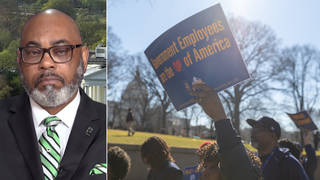
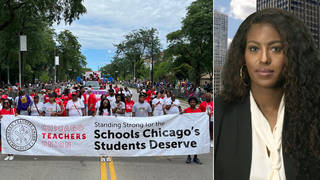
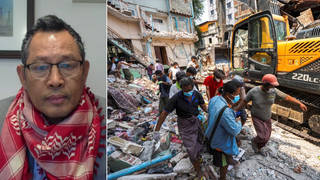
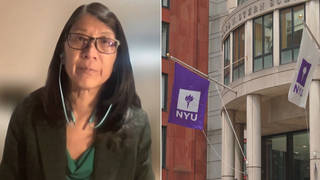





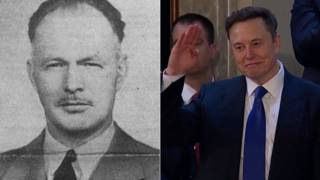
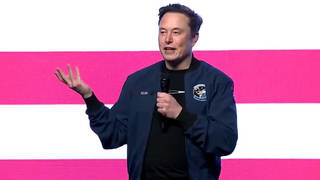
Media Options